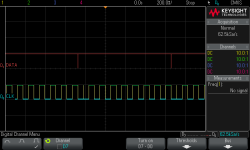tom.storey
Experienced Member
Hi all, new member.
I picked up an XT recently, its dead in the water so Im doing a refurb/repair on it (holy heck is it dusty inside...!) If people are interested I will start a thread and document my journey bringing it back to life?
Anyhow, someone mentioned that a PS/2 keyboard should work with these, but Im not convinced. I cant find any particular references anywhere else, other than some keyboards which could be switched between AT and XT compatability modes.
I bought a PS/2 to "AT" style adapter cable, but I assume this is not going to "just work"...
It came with a generic keyboard which Ive given a good clean and will be happy using in the mean time, but it is a British layout keyboard and I am used to US layout, so that is something I'd like to "fix" longer term. Ive heard of products like XT2AT which is an option I suppose.
Thanks
I picked up an XT recently, its dead in the water so Im doing a refurb/repair on it (holy heck is it dusty inside...!) If people are interested I will start a thread and document my journey bringing it back to life?
Anyhow, someone mentioned that a PS/2 keyboard should work with these, but Im not convinced. I cant find any particular references anywhere else, other than some keyboards which could be switched between AT and XT compatability modes.
I bought a PS/2 to "AT" style adapter cable, but I assume this is not going to "just work"...
It came with a generic keyboard which Ive given a good clean and will be happy using in the mean time, but it is a British layout keyboard and I am used to US layout, so that is something I'd like to "fix" longer term. Ive heard of products like XT2AT which is an option I suppose.
Thanks

